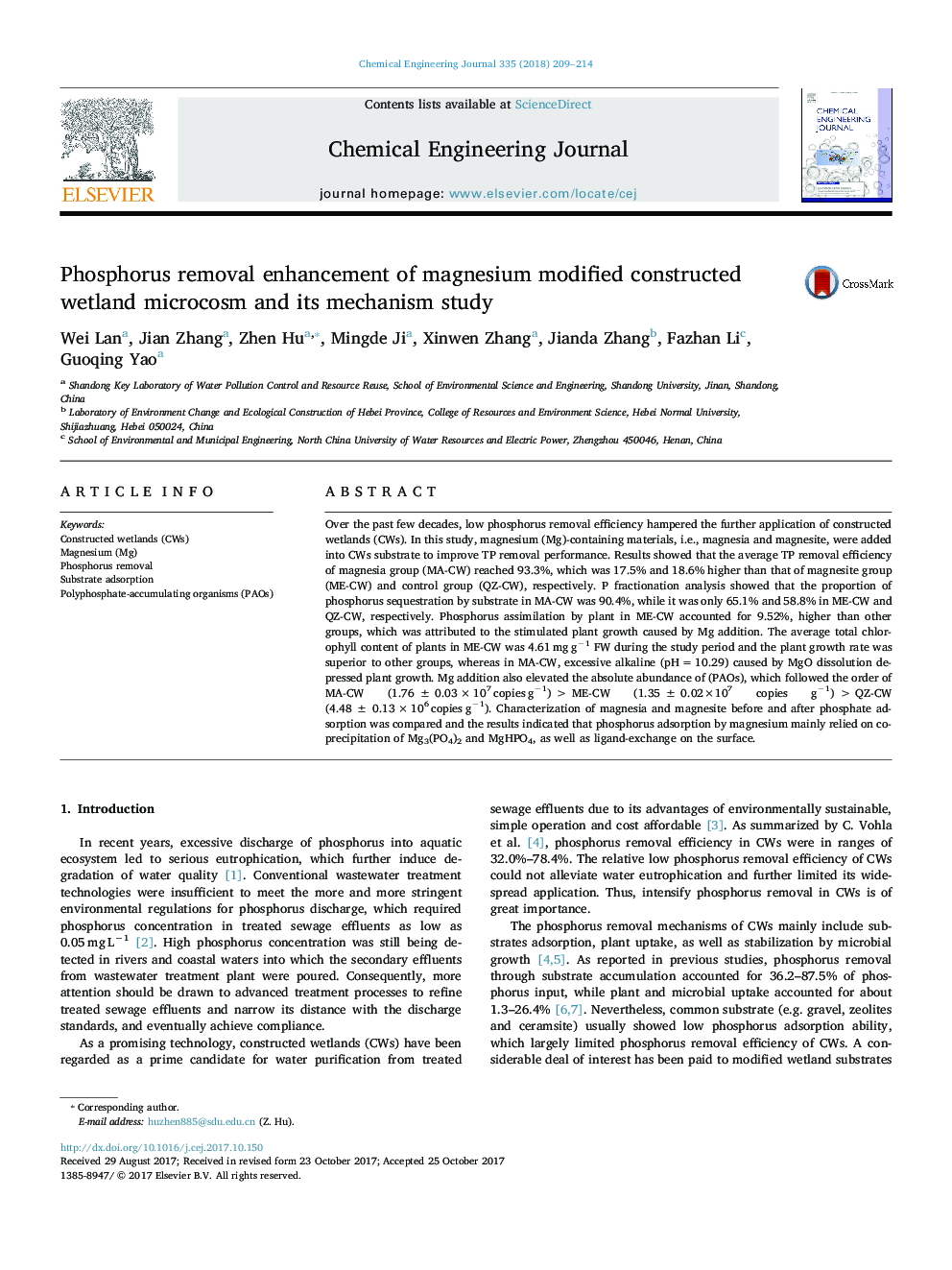| Article ID | Journal | Published Year | Pages | File Type |
|---|---|---|---|---|
| 6580813 | Chemical Engineering Journal | 2018 | 6 Pages |
Abstract
Over the past few decades, low phosphorus removal efficiency hampered the further application of constructed wetlands (CWs). In this study, magnesium (Mg)-containing materials, i.e., magnesia and magnesite, were added into CWs substrate to improve TP removal performance. Results showed that the average TP removal efficiency of magnesia group (MA-CW) reached 93.3%, which was 17.5% and 18.6% higher than that of magnesite group (ME-CW) and control group (QZ-CW), respectively. P fractionation analysis showed that the proportion of phosphorus sequestration by substrate in MA-CW was 90.4%, while it was only 65.1% and 58.8% in ME-CW and QZ-CW, respectively. Phosphorus assimilation by plant in ME-CW accounted for 9.52%, higher than other groups, which was attributed to the stimulated plant growth caused by Mg addition. The average total chlorophyll content of plants in ME-CW was 4.61â¯mgâ¯gâ1 FW during the study period and the plant growth rate was superior to other groups, whereas in MA-CW, excessive alkaline (pHâ¯=â¯10.29) caused by MgO dissolution depressed plant growth. Mg addition also elevated the absolute abundance of (PAOs), which followed the order of MA-CW (1.76â¯Â±â¯0.03â¯Ãâ¯107â¯copiesâ¯gâ1)â¯>â¯ME-CW (1.35â¯Â±â¯0.02Ã107 copies gâ1)â¯>â¯QZ-CW (4.48â¯Â±â¯0.13â¯Ãâ¯106â¯copiesâ¯gâ1). Characterization of magnesia and magnesite before and after phosphate adsorption was compared and the results indicated that phosphorus adsorption by magnesium mainly relied on co-precipitation of Mg3(PO4)2 and MgHPO4, as well as ligand-exchange on the surface.
Keywords
Related Topics
Physical Sciences and Engineering
Chemical Engineering
Chemical Engineering (General)
Authors
Wei Lan, Jian Zhang, Zhen Hu, Mingde Ji, Xinwen Zhang, Jianda Zhang, Fazhan Li, Guoqing Yao,
